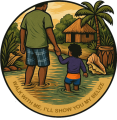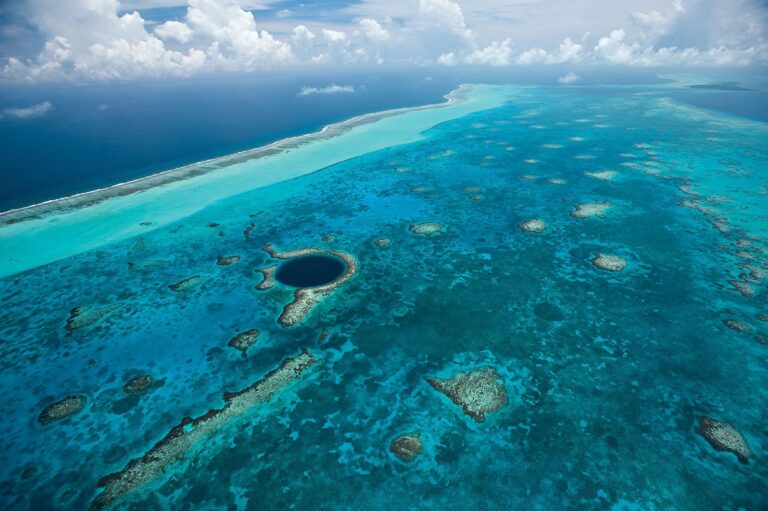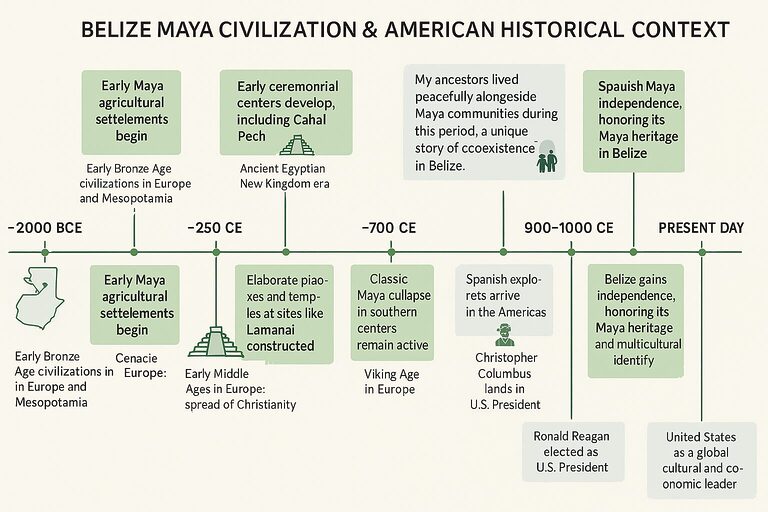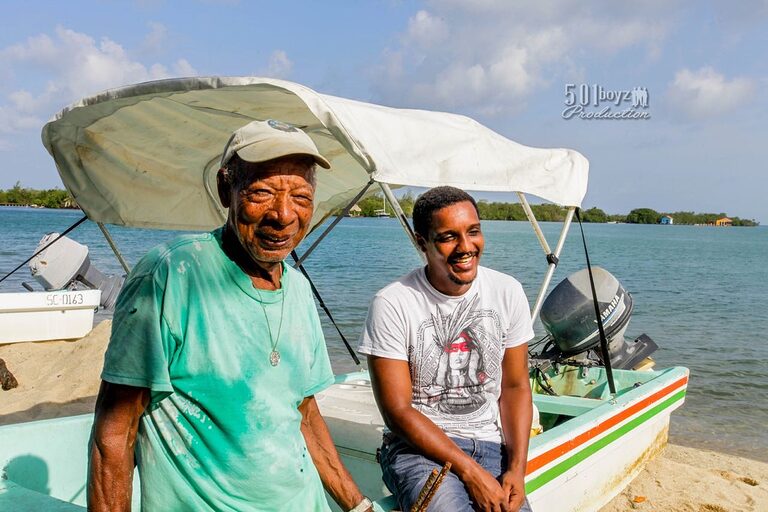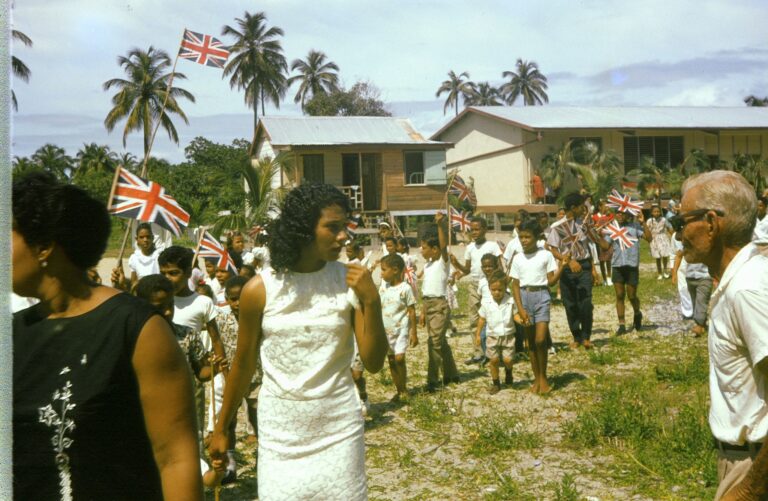Belize History Timeline: From Ancient Roots to Independence — and Beyond
Belize didn’t begin with tourism, or colonization, or even the name “Belize.”
It began with the land, the rivers, the stars, and the people who listened to them.
This timeline isn’t just about facts and dates.
It’s about how time moves through us, and how we carry it forward.
⛰️ 60–100 million years ago: Limestone Begins to Form Beneath the Sea
Before there was a Belize… there was a sea.
Tiny marine creatures — coral, plankton, shells — lived and died, leaving behind calcium carbonate.
Layer by layer, those remains hardened into limestone, forming the seabed that would become Belize.
This rock would go on to:
- Shape Belize’s caves, rivers, and waterfalls
- Hold Maya temples, tombs, and sacred sites
- Form the base of the Barrier Reef
- Create the sand on Belize’s modern beaches
Limestone is the geological memory of ancient life — and the quiet architect of Belize’s land and spirit.
🌀 Ancient Times — Before 2500 BCE
The First Peoples
Long before the Maya, Belize was home to Paleoindian and Archaic peoples — hunters, gatherers, seed planters.
No pyramids. Just survival and memory passed down through footsteps and firelight.
🌿 2500 BCE – 250 CE
The Rise of the Maya
Farming, community, and sacred timekeeping begin to shape the land.
In Belize, early settlements like Cuello and Cahal Pech emerge.
This is the Preclassic Period, when humans start mirroring the cosmos.
Want to go deeper? Explore how the Maya calendar shaped time.
🏯 250 – 900 CE
The Classic Maya Civilization
This is Belize before Belize — a world of powerful city-states, each with its own rulers, temples, and calendars.
- Caracol: Once larger than modern-day Belize City.
- Xunantunich: Still watching the Mopan valley.
- Lamanai: Inhabited for over 3,000 years.
They traded jade and obsidian, tracked Venus, built pyramids, and spoke to time itself.
🔥 900 – 1500s
Maya Transition and Resistance
The stone cities fade, but the Maya never disappear.
They move deeper into the forests and highlands.
In southern Belize, the Q’eqchi’ and Mopan Maya hold their ground — and their traditions.
⚓ 1492 – 1600s
Spanish Ships, but No Stronghold
The Spanish arrive, but can’t conquer.
Belize becomes a fringe — claimed by empires, but ruled by rivers, resistance, and roots.
🪵 1600s – 1700s
British Logwood Settlements
English pirates-turned-loggers come for logwood, used to dye fabric in Europe.
They settle near the Belize River, building rough camps that slowly form a colony.
See how the Belize River carried more than logs — it carried memory.
⚔️ 1798
The Battle of St. George’s Caye
September 10th: The Baymen — with help from enslaved Africans and free Creoles — defeat the Spanish.
This naval skirmish becomes a founding myth.
Still celebrated today as St. George’s Caye Day.
⛓️ 1800s
Slavery, Emancipation, and Creole Culture
- Early 1800s: Shift from logwood to mahogany exports.
- 1832: Arrival of the Garifuna people after exile from St. Vincent.
- 1838: Slavery is abolished.
- Freed Africans shape Belizean identity, language, and culture.
- Mahogany becomes king — and the backbone of British Honduras’ economy.
Learn how Creole identity grew from struggle and adaptation.
📜 1862
British Honduras Becomes a Crown Colony
The British formalize control.
Roads, schools, and exports expand — but mainly for colonial benefit.
The Maya continue resisting in the south. The people adapt — quietly, fiercely.
- 1894: Riot over unfair coinage shows economic exploitation.
📢 Early 1900s
Labor, Hurricanes, and Rising Consciousness
- 1919: Ex-servicemen riot over inequality and racism.
- 1928: The first Holy Saturday Cross Country Cycling Classic
- 1931: A hurricane kills over 2,500 in Belize City.
- 1934: Antonio Soberanis leads labor protests that shake the colony.
- 1932: Belize’s first radio broadcast brings new voices into homes.
🇧🇿 1950
The Independence Movement Begins
- 1950: The People’s United Party (PUP) is born, led by George Price.
- 1961: Hurricane Hattie devastates Belize City — leading to the founding of Belmopan inland.
- 1973: The colony officially changes its name from British Honduras to Belize.
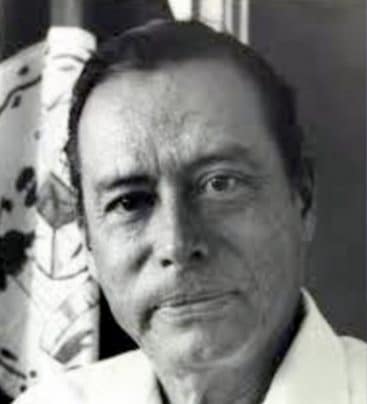
🛫 1977 – 1980
Belize Airways Ltd. Takes Flight
Belize launches its first national airline — Belize Airways Ltd.
Operating from Philip Goldson International, it connects Belize to Miami, New Orleans, and Central America.
It was short-lived, but deeply symbolic:
“For the first time, we saw our name in the sky. A flying flag of pride — even before independence.”
🌀 Learn what arriving in Belize feels like today
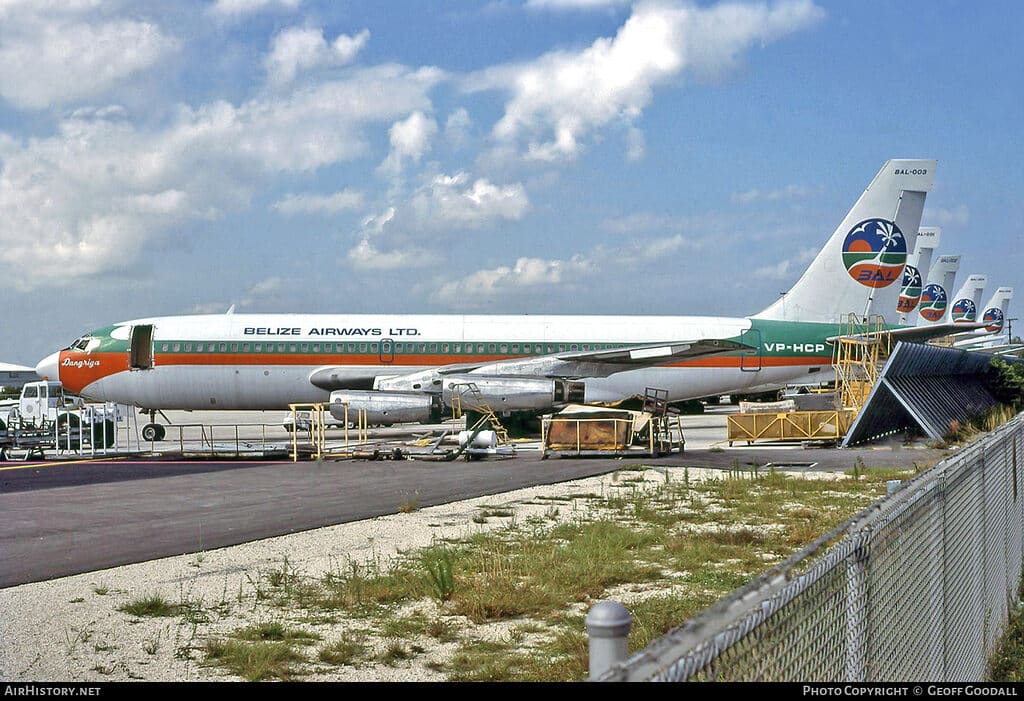
🕊️ September 21, 1981
Independence at Last
The anthem plays. The new flag rises.
Belize becomes a sovereign nation — the last in mainland Central America.
But Guatemala’s territorial claim still lingers.
Still, the soul of the country is now undeniably its own.
👑 1985 — Queen Elizabeth’s First Visit
I was born just a year before, in 1984. When Queen Elizabeth first came to Belize in October 1985, it was a major moment for the young nation.
- Arrived in Belize City and given the Key to the City
- Welcomed with cultural performances, including Junkanoo dance
- Served Belizean gibnut at an official dinner
- Visit came just after a General Election, symbolizing support for Belize’s democracy
🛡️ 1980s–1990s
The Making of a Nation
- 1984: The UDP wins power, proving peaceful democracy is real. I was also born this year.
👑 1994 — Queen Elizabeth’s Return
Her second visit came in February 1994, remembered for the historic gathering in Belmopan.
- Arrived at Fort George Pier, greeted by schoolchildren
- Met by PM Sir Manuel Esquivel and Governor General Sir Colville Young
- Took her place in the Speaker’s Chair at the National Assembly
- Addressed Parliament: praised democracy, urged vigilance, spoke on crime & youth
- In attendance: George Price, Philip Goldson, Said Musa, Dean Barrow, John Briceño — Belize’s leaders past, present, and future
- 1994: The last British troops withdraw, and Belize assumes full military control through the BDF.
- 1995: The Belize Defense Force (BDF) assumes full military control.
- 1996: The Belize Barrier Reef is named a UNESCO World Heritage Site.
- 1998: To promote conservation of Belize’s rivers, La Ruta Maya is a four-day, 180-mile canoe race from San Ignacio to Belize City.
- 1999: The National Emergency Management Organization (NEMO) was established on the 1st February, after category 5 Hurricane Mitch threatened Belize for five days in October of 1998.
🧬 2000 – Today
- 2001: Garifuna language, dance, and music are proclaimed a UNESCO Masterpiece of the Oral and Intangible Heritage of Humanity.
- 2012: Belize joins the world in observing the end of a great Maya calendar cycle, reaffirming Maya continuity.
- 2022: Belize formally begins transition toward becoming a republic, signaling a future beyond monarchy.
- 2025: August 4th, 2025: Significant change to currency design — a powerful symbol of national identity.
A Young Nation with Ancient Roots
Tourism grows. Culture blends. Conservation becomes conversation.
Belize balances modern development with ancestral memory.
- Chinese and East Indian communities expand throughout towns and villages.
- Garifuna music, Creole identity, and Maya spirituality gain global attention.
- Belize becomes known for what it always was — a place of coexistence.
↔️ Explore the cultural blends that shape Belize
🧍🏾 My Story: A Guide in the Timeline
- 1980s–1990s: I’m born and raised in Placencia — a barefoot boy fishing with my family, walking the beach after school.
“The first tour I gave was just showing someone what I already knew — the land, the trees, the feeling of home.” - 2000s: I become a licensed Belize tour guide, walking travelers through ruins, caves, rivers, and stories.
- 2025s: I create Belize With Alvin, a site born not to sell tours — but to preserve a voice.
“This isn’t a business pitch. This is memory. This is where culture lives.”
Now: I walk with travelers, I write, I raise my sons, and I protect what’s still here — before it’s gone.
And you’re part of that story now, too.
🪶 Final Thought
We don’t walk through time.
Time walks through us.
And in Belize — whether through stone, story, or silence — we still hear it moving.
Walk with me. I’ll show you my Belize.
